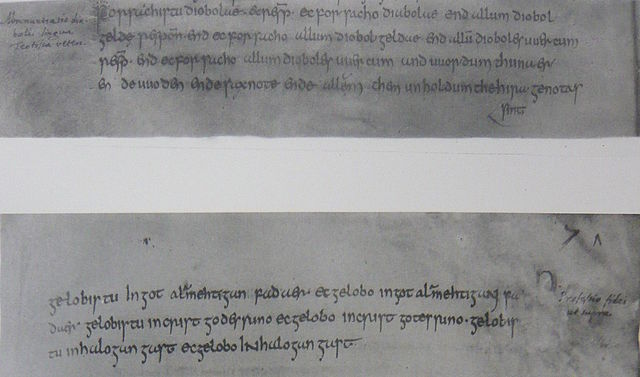French Flemish is a West Flemish dialect spoken in the north of contemporary France.
Historic regression of Dutch in the Western periphery. The blue line indicates the situation in the 7th–8th century; the red line marks the situation during the 20th century; the black line is the current French-Belgian border.
Bilingual sign at the entrance to the village of Renescure (between Saint-Omer and Hazebrouck)
Dutch is a West Germanic language, spoken by about 25 million people as a first language and 5 million as a second language and is the third most spoken Germanic language. In Europe, Dutch is the native language of most of the population of the Netherlands and Flanders. In South America, it is the native language of the majority of the population of Suriname, and spoken as a second language in the polyglot Caribbean island countries of Aruba, Curaçao and Sint Maarten. All these countries have recognised Dutch as one of their official languages, and are involved in one way or another in the Dutch Language Union. Dutch Caribbean municipalities have Dutch as one of the official languages too. Up to half a million native speakers reside in the United States, Canada and Australia combined, and historical linguistic minorities on the verge of extinction remain in parts of France and Germany.
The Utrecht baptismal vow
Title page of the Statenvertaling (1637) reads: Biblia ... Uyt de Oorspronckelijcke talen in onse Neder-landtsche tale getrouwelijck over-geset. (English: From the Original languages into our Dutch language faithfully translated.
Indonesia did not adopt the Dutch language after independence. However the Indonesian language absorbed a lot of Dutch vocabulary into its language. Seen here is the kantor pos (from Dutch postkantoor), meaning post office.
Standard Dutch used in a 1916 ad in South Africa before Afrikaans replaced Dutch for use in media






